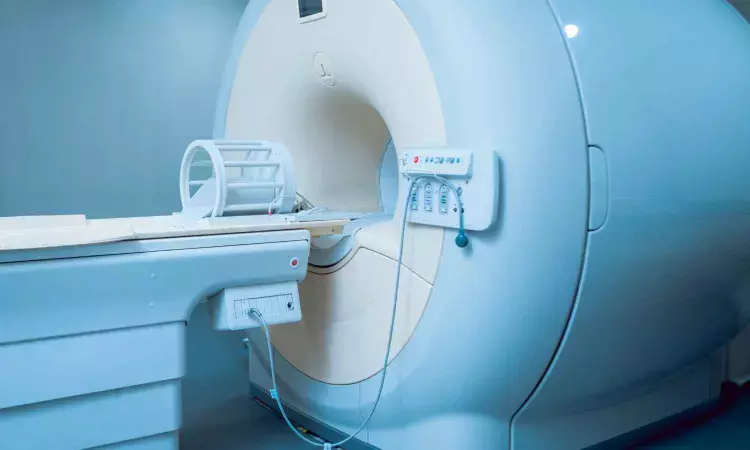- Home
- Medical news & Guidelines
- Anesthesiology
- Cardiology and CTVS
- Critical Care
- Dentistry
- Dermatology
- Diabetes and Endocrinology
- ENT
- Gastroenterology
- Medicine
- Nephrology
- Neurology
- Obstretics-Gynaecology
- Oncology
- Ophthalmology
- Orthopaedics
- Pediatrics-Neonatology
- Psychiatry
- Pulmonology
- Radiology
- Surgery
- Urology
- Laboratory Medicine
- Diet
- Nursing
- Paramedical
- Physiotherapy
- Health news
- Fact Check
- Bone Health Fact Check
- Brain Health Fact Check
- Cancer Related Fact Check
- Child Care Fact Check
- Dental and oral health fact check
- Diabetes and metabolic health fact check
- Diet and Nutrition Fact Check
- Eye and ENT Care Fact Check
- Fitness fact check
- Gut health fact check
- Heart health fact check
- Kidney health fact check
- Medical education fact check
- Men's health fact check
- Respiratory fact check
- Skin and hair care fact check
- Vaccine and Immunization fact check
- Women's health fact check
- AYUSH
- State News
- Andaman and Nicobar Islands
- Andhra Pradesh
- Arunachal Pradesh
- Assam
- Bihar
- Chandigarh
- Chattisgarh
- Dadra and Nagar Haveli
- Daman and Diu
- Delhi
- Goa
- Gujarat
- Haryana
- Himachal Pradesh
- Jammu & Kashmir
- Jharkhand
- Karnataka
- Kerala
- Ladakh
- Lakshadweep
- Madhya Pradesh
- Maharashtra
- Manipur
- Meghalaya
- Mizoram
- Nagaland
- Odisha
- Puducherry
- Punjab
- Rajasthan
- Sikkim
- Tamil Nadu
- Telangana
- Tripura
- Uttar Pradesh
- Uttrakhand
- West Bengal
- Medical Education
- Industry
Breakthrough MRI contrast agent design continues path to safer, more effective diagnostics

Scientists at the University of Birmingham have developed a new class of MRI contrast agents: improving their stability to create a significant advancement in medical imaging technology.
Metallo coiled coils had offered exciting opportunities for use in MRI, but their advancement was limited by poor stability. Researchers have now overcome this challenge - making these synthetic protein-like structures viable candidates to develop for use with patients.
Led by Professor Anna Peacock, Professor of Bioinorganic Chemistry at the University's School of Chemistry, the study introduces a covalent cross-linking strategy that reinforces metallo-coiled coils.
These structures are designed to bind gadolinium, a metal commonly used in MRI contrast agents, offering a novel approach that significantly enhances their performance and safety profile.
The research, conducted in collaboration with scientists from the University of Bristol and Università del Piemonte Orientale in Italy and supported by the EPSRC, has been published in the Journal of the American Chemical Society.
The team found that the cross-linked agent demonstrated a 30% increase in MRI relativity compared to its non-cross-linked counterpart, which should improve image clarity at clinically relevant magnetic field strengths. There was also unprecedented enhancement in chemical and biological stability.
Professor Anna Peacock commented: “We’ve developed a new class of MRI contrast agents that are significantly more efficient than current clinical agents, and we’ve now made them stable.
“By locking metal-binding peptides into place with molecular cross-links, we've engineered MRI contrast agents that are not only more stable but also deliver a further 30% improvement in effectiveness compared to their non-crosslinked counterparts. The modular nature of these designs paves the way for safer, smarter imaging in clinical diagnostics."
The study also explored performance in Seronorm, a human serum matrix, to provide insights into potential interactions with endogenous biomolecules. The agents retained bio-inertness and structural resilience, closely matching the results obtained in aqueous solution, indicating a strong potential for in vivo applications.
University of Birmingham Enterprise has filed a patent application for the novel metallo coiled-coil approach, and the researchers are seeking licensing or development partners from industry.
Beyond MRI, the ability to enhance stability and exert precise control over metal coordination environments through this covalent cross-linking strategy presents opportunities for broader applications in catalysis, sensing, and materials science.
Reference: Kate A. Hadley, Marco Ricci, Marko Hanzevacki, Helena Bernstein, Hiruni S. Jayasekera, Aneika C. Leney, Adrian J. Mulholland, Fabio Carniato, Mauro Botta, Melanie M. Britton, Anna F. A. Peacock, Breakthrough MRI contrast agent design continues path to safer, more effective diagnostics, University of Birmingham, Journal: Journal of the American Chemical Society, DOI: 10.1021/jacs.5c13620
Dr Kamal Kant Kohli-MBBS, DTCD- a chest specialist with more than 30 years of practice and a flair for writing clinical articles, Dr Kamal Kant Kohli joined Medical Dialogues as a Chief Editor of Medical News. Besides writing articles, as an editor, he proofreads and verifies all the medical content published on Medical Dialogues including those coming from journals, studies,medical conferences,guidelines etc. Email: drkohli@medicaldialogues.in. Contact no. 011-43720751


